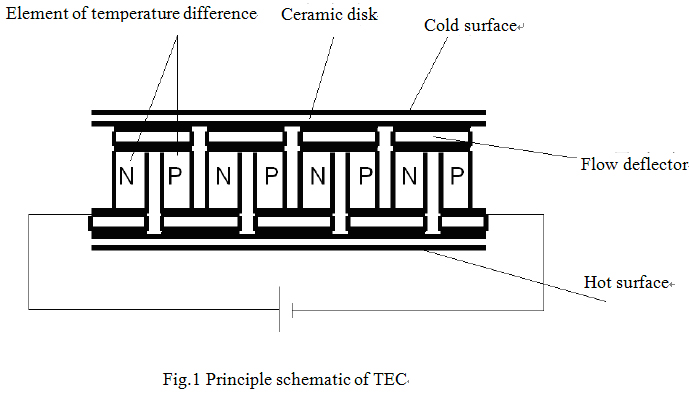In 1834, Peltier, a French physicist, found that through DC electricity one node becomes cold and the other one get hot in the closed circuit which is composed of two different metals. This effect was later named as the Peltier effect. Another name of TEC is Semiconductor refrigeration which is a kind of refrigeration method by taking advantages of the Peltier effect. The principle was shown in Figure 1. TECs consist of semiconductor thermoelectric elements (Ntype, Ptype), the metal flow deflector, ceramic disk, wherein the flow deflector is connected with the node of semiconductor thermoelectric elements.

When the current flows from the N type semiconductor to P type semiconductor, the node is endothermic; when the current flows from the P type semiconductor to N type semiconductor, the node is exothermic. Cold and hot surface is then formed. When the current is in the opposite direction, the original endothermic node becomes exothermic and the original exothermic node becomes endothermic. So the cold and hot surface positions swap. The refrigeration method needs no refrigerant, and it has simple structure and no moving parts. It is very suitable for miniature refrigeration field or special requirements of the occasion. The characteristics of TEC Technology have been applied in the civil refrigeration field and the refrigeration field. The performance of TECs depends on the refrigerating performance of semiconductor materials. In engineering, the refrigeration performance of semiconductor materials are commonly measured with product ZT of the figure of merit Z and the service temperature T, wherein the figure of merit Z=α2σ/k (α is the thermoelectric power of thermoelectric refrigeration elements, σ is the conductivity of thermoelectric refrigeration elements, k is the thermal conductivity of thermoelectric refrigeration elements).
